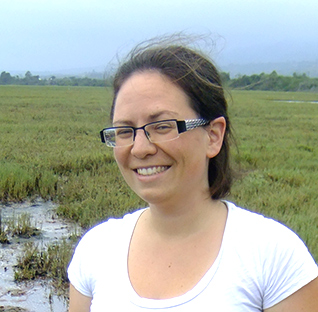Invasion biology
Invaders helping invaders: Largemouth bass and Egeria densa in the Sacramento San Joaquin Delta Populations of largemouth bass (Micropterus salmoides) and […]
Invaders helping invaders: Largemouth bass and Egeria densa in the Sacramento San Joaquin Delta
Populations of largemouth bass (Micropterus salmoides) and other centrarchid species  have been expanding rapidly in the Sacramento San Joaquin Delta, concurrent with a a decline in species that occupy the pelagic zone. This shift from a pelagic to a littoral-dominated fish community coincided with the expansion of an invasive submerged aquatic macrophyte, Brazilian waterweed (Egeria densa). We are using electrofishing surveys and diet content analysis to better understand the relationship between Egeria densa and largemouth bass in the Delta, and the implications of this relationship for the native fish community. This work is funded by the Interagency Ecological Program, and is led by Louise Conrad at the CA Department of Water Resources and my advisor, Andy Sih.
have been expanding rapidly in the Sacramento San Joaquin Delta, concurrent with a a decline in species that occupy the pelagic zone. This shift from a pelagic to a littoral-dominated fish community coincided with the expansion of an invasive submerged aquatic macrophyte, Brazilian waterweed (Egeria densa). We are using electrofishing surveys and diet content analysis to better understand the relationship between Egeria densa and largemouth bass in the Delta, and the implications of this relationship for the native fish community. This work is funded by the Interagency Ecological Program, and is led by Louise Conrad at the CA Department of Water Resources and my advisor, Andy Sih.
The importance of personality in the invasion biology of the western mosquitofish
Many species are regularly introduced into novel habitats, but only a subset of these species are able to thrive in these new habitats and expand into nearby habitats. A major goal of invasion biology is to identify the traits that allow this subset of introduced species to successfully invade novel habitats. My collaborators and I explored how behavioral traits, particularly sociability, influence invasion dynamics in western mosquitofish (Gambusia affinis), a fish which is invasive in over 40 countries. We found that asocial fish (i.e., fish that spent less time in close contact with conspecifics) led the invasion front in a series of outdoor, connected pools, and that the behavioral composition of a school was important in determining whether or not individuals left to explore new habitats. This work was featured in Nature’s Research Highlights and in Conservation Magazine, and you can read more about it on Julien Cote’s research page here. This work was done in collaboration with Julien Cote, Sean Fogarty, Tomas Brodin, and Andy Sih.
